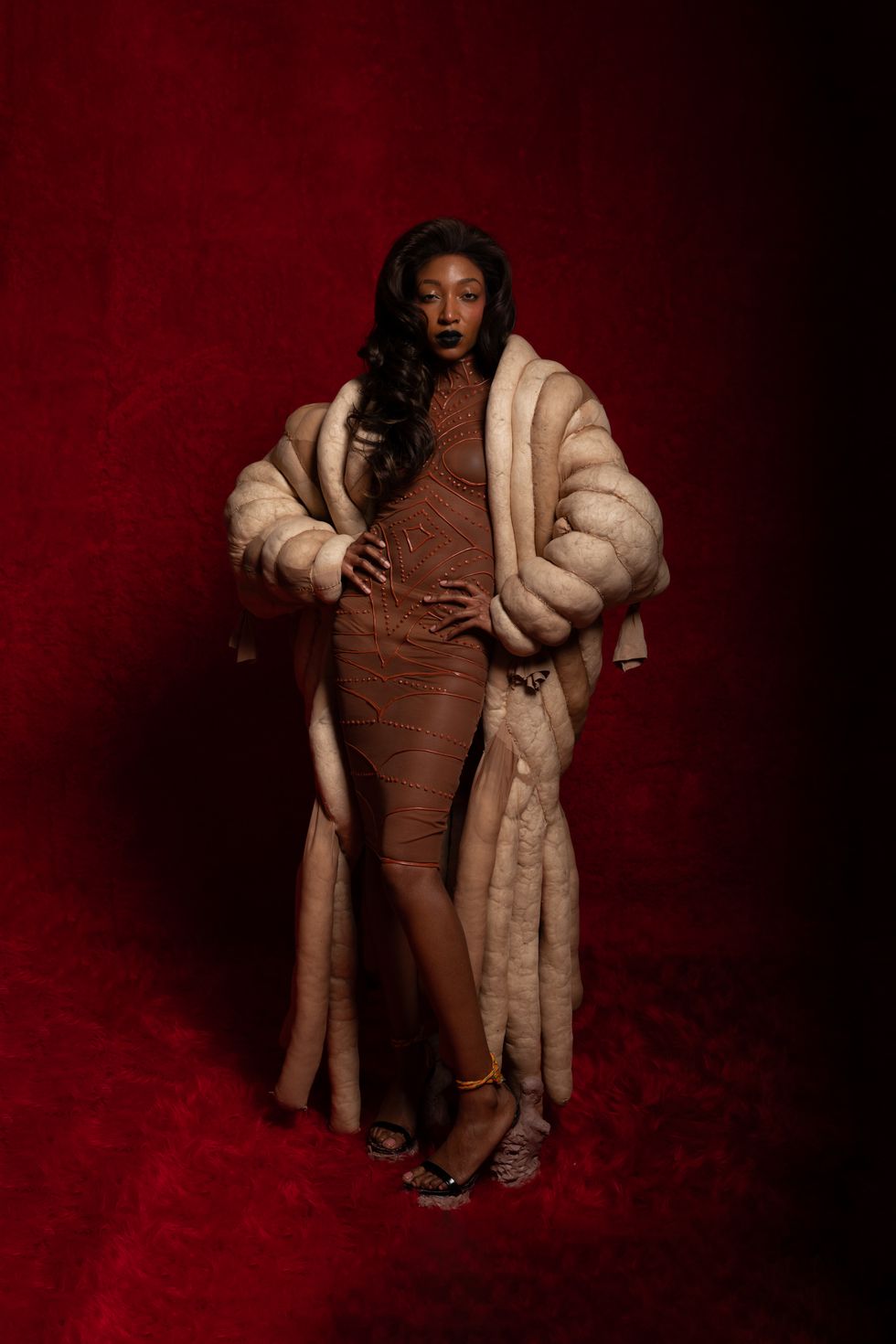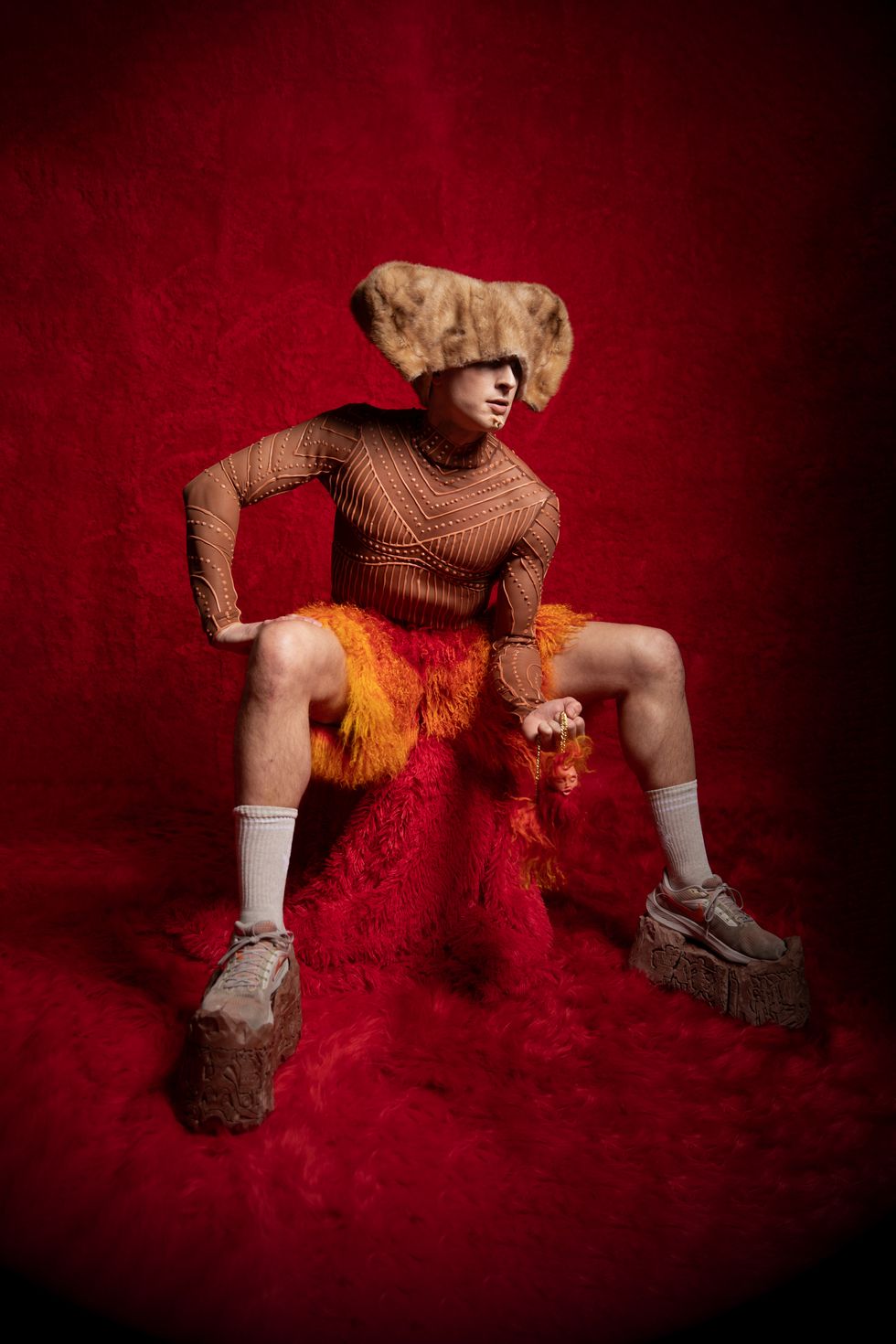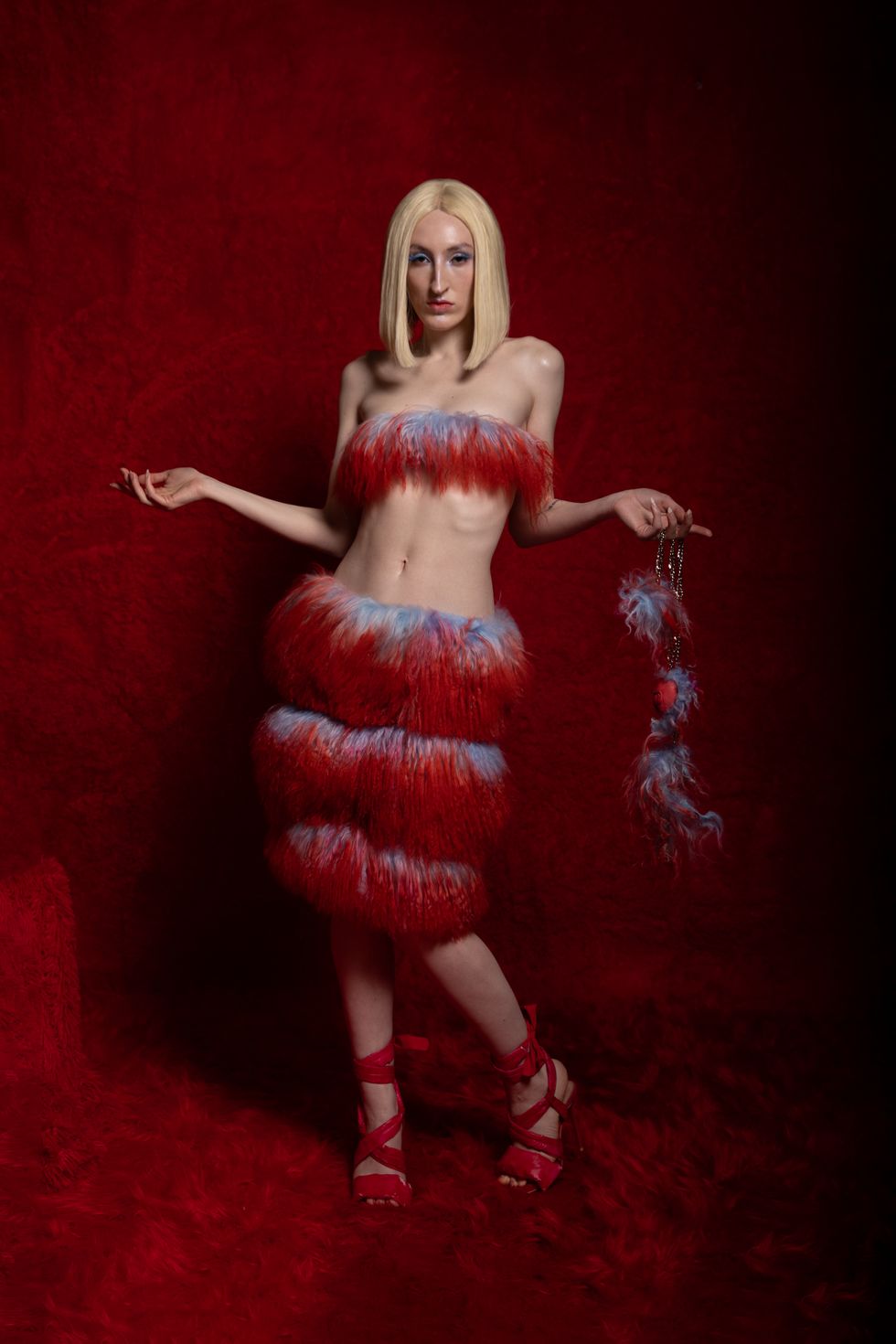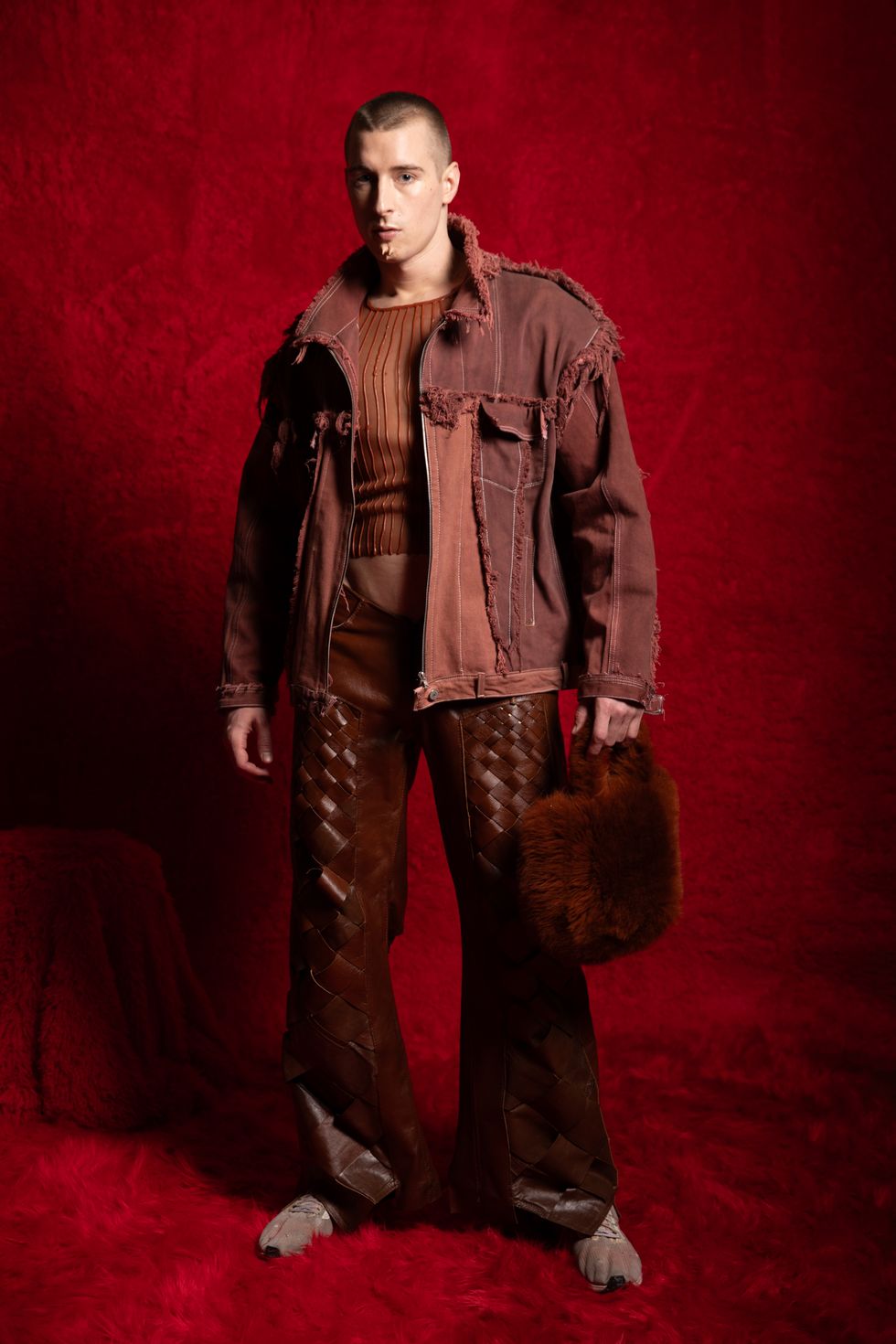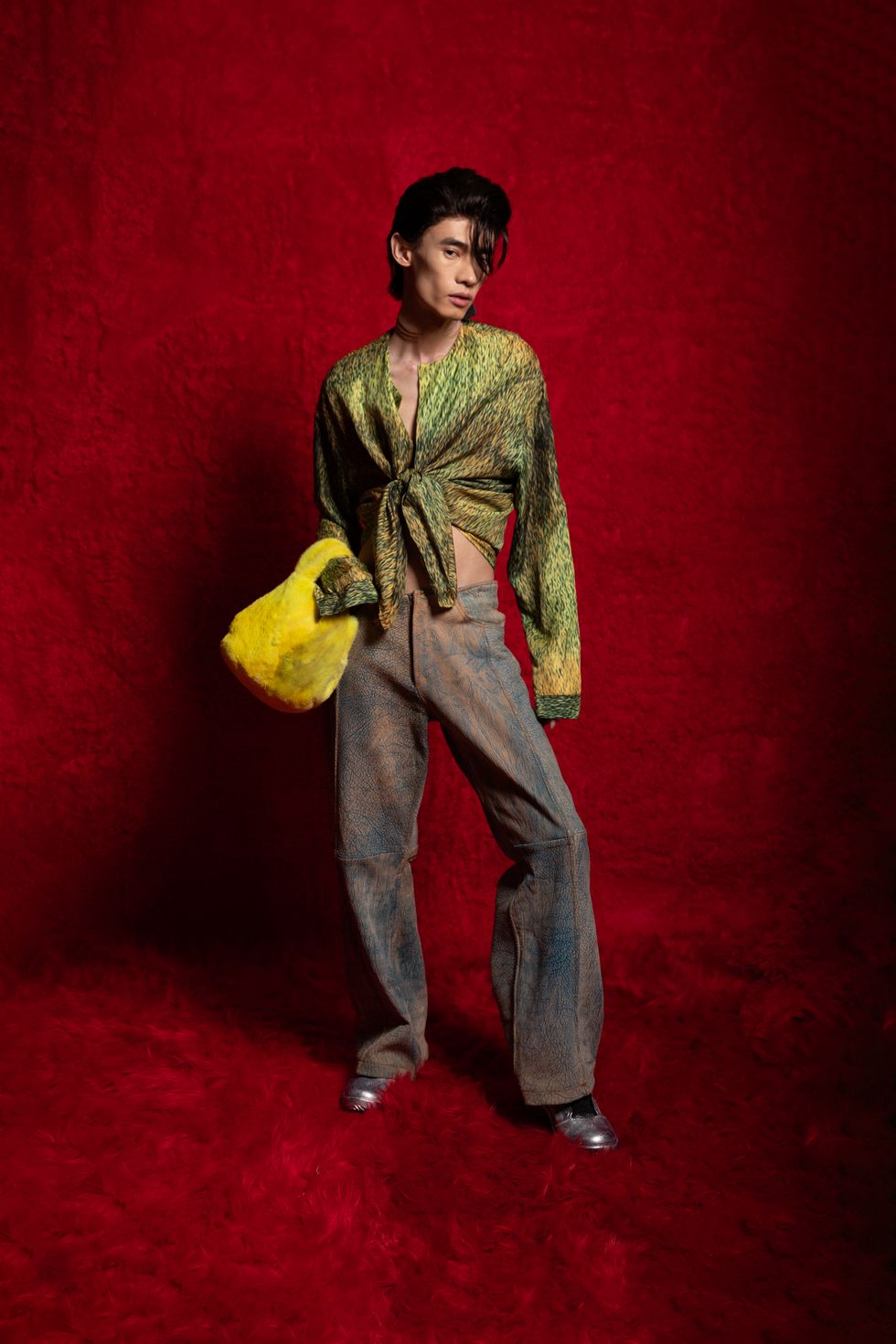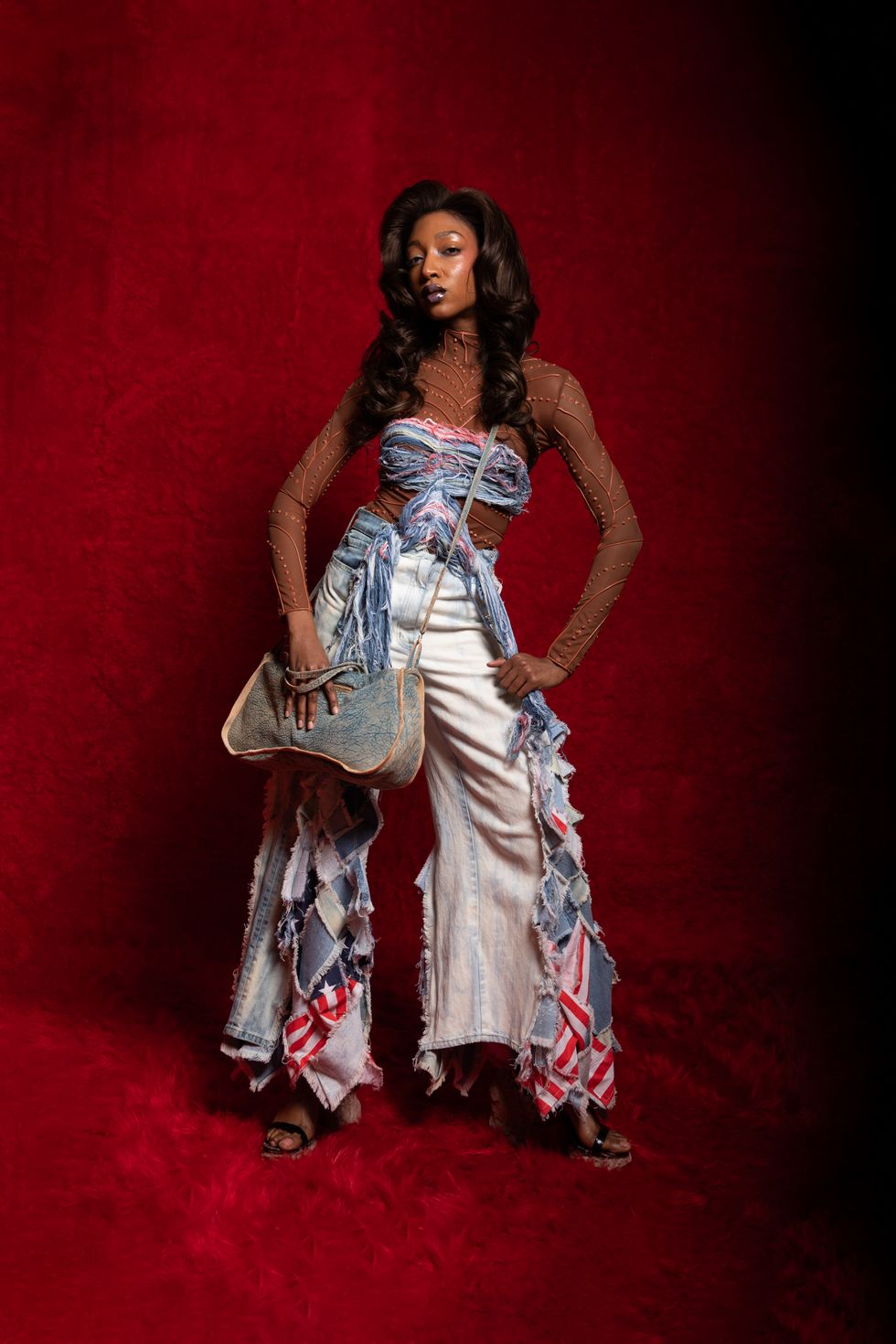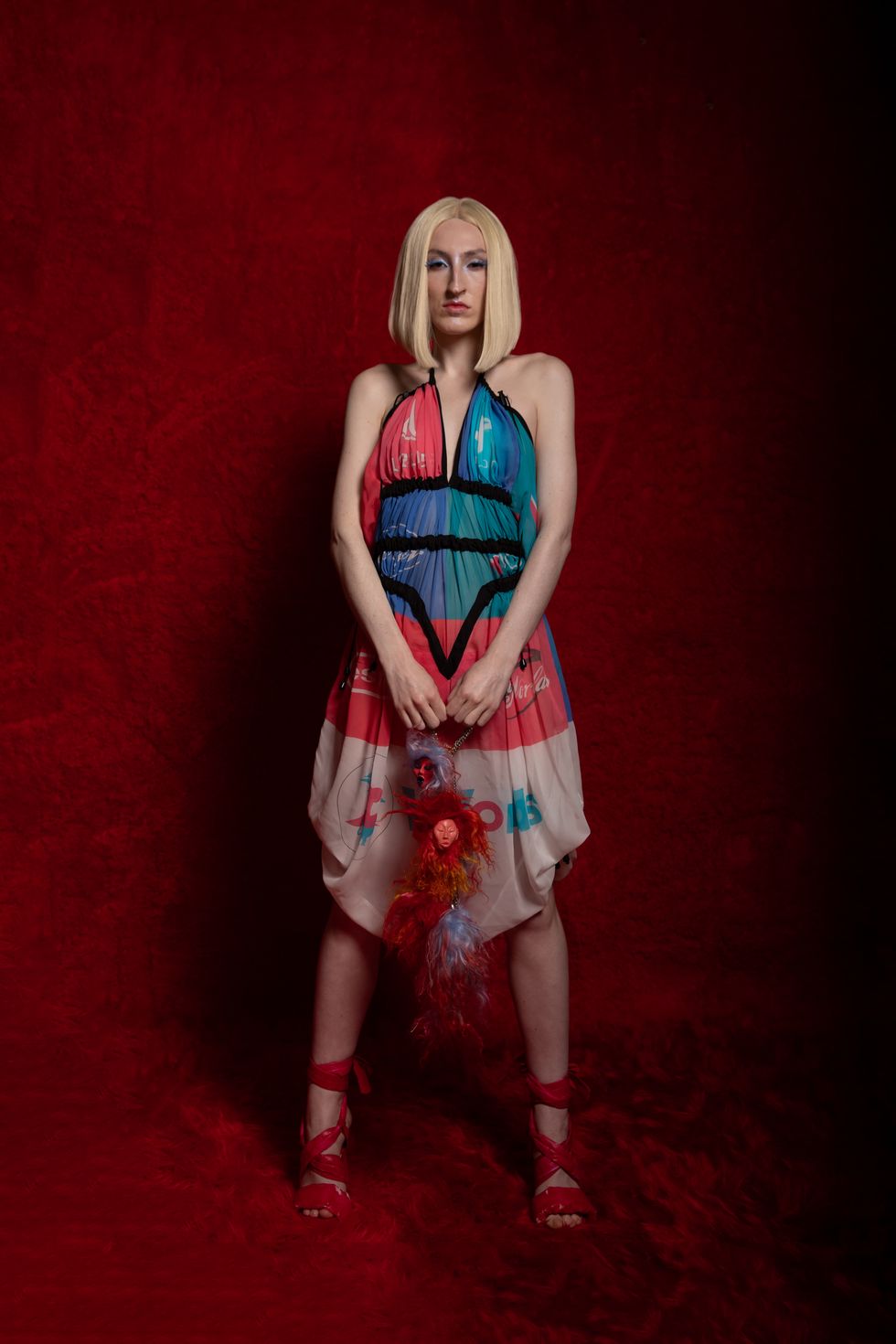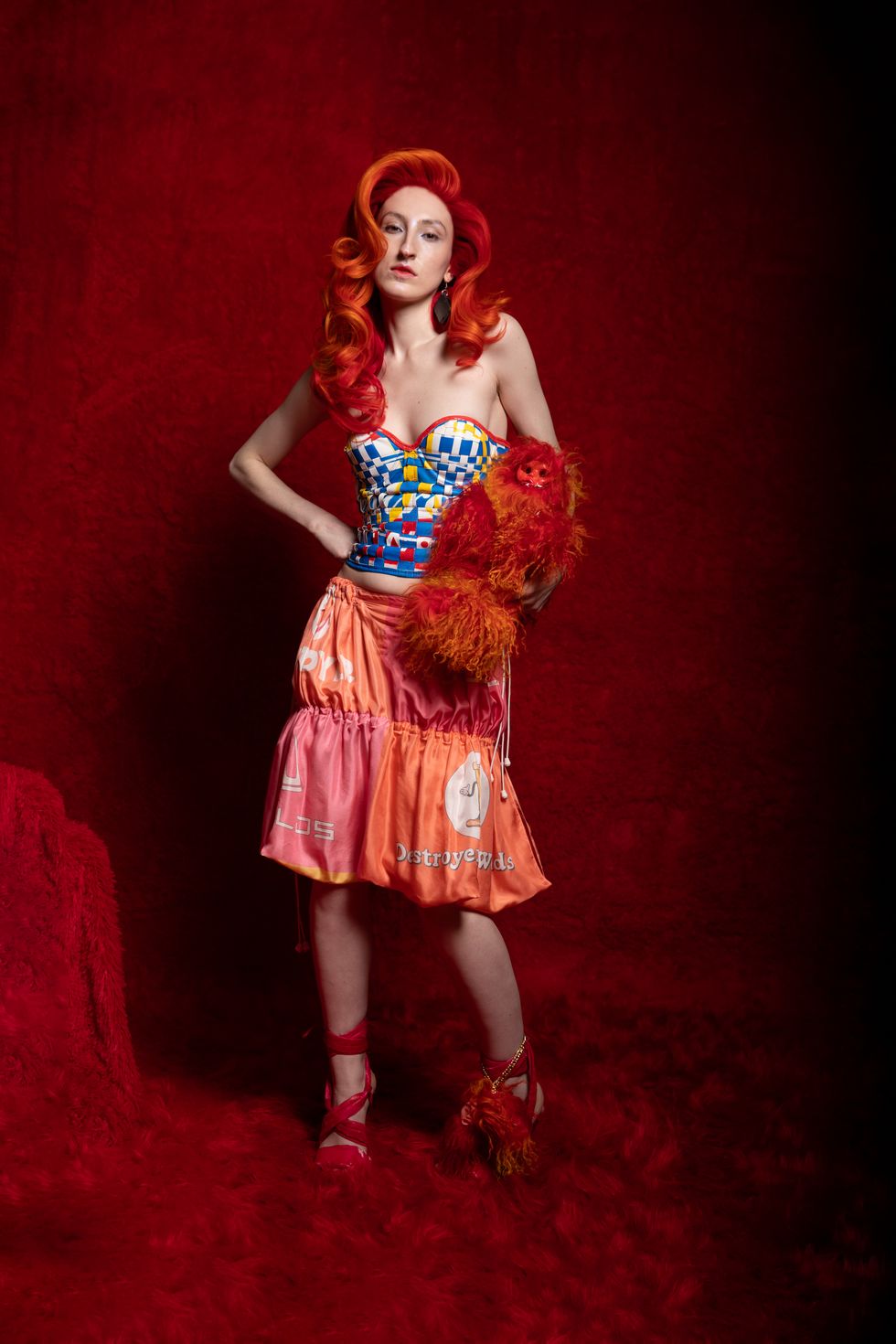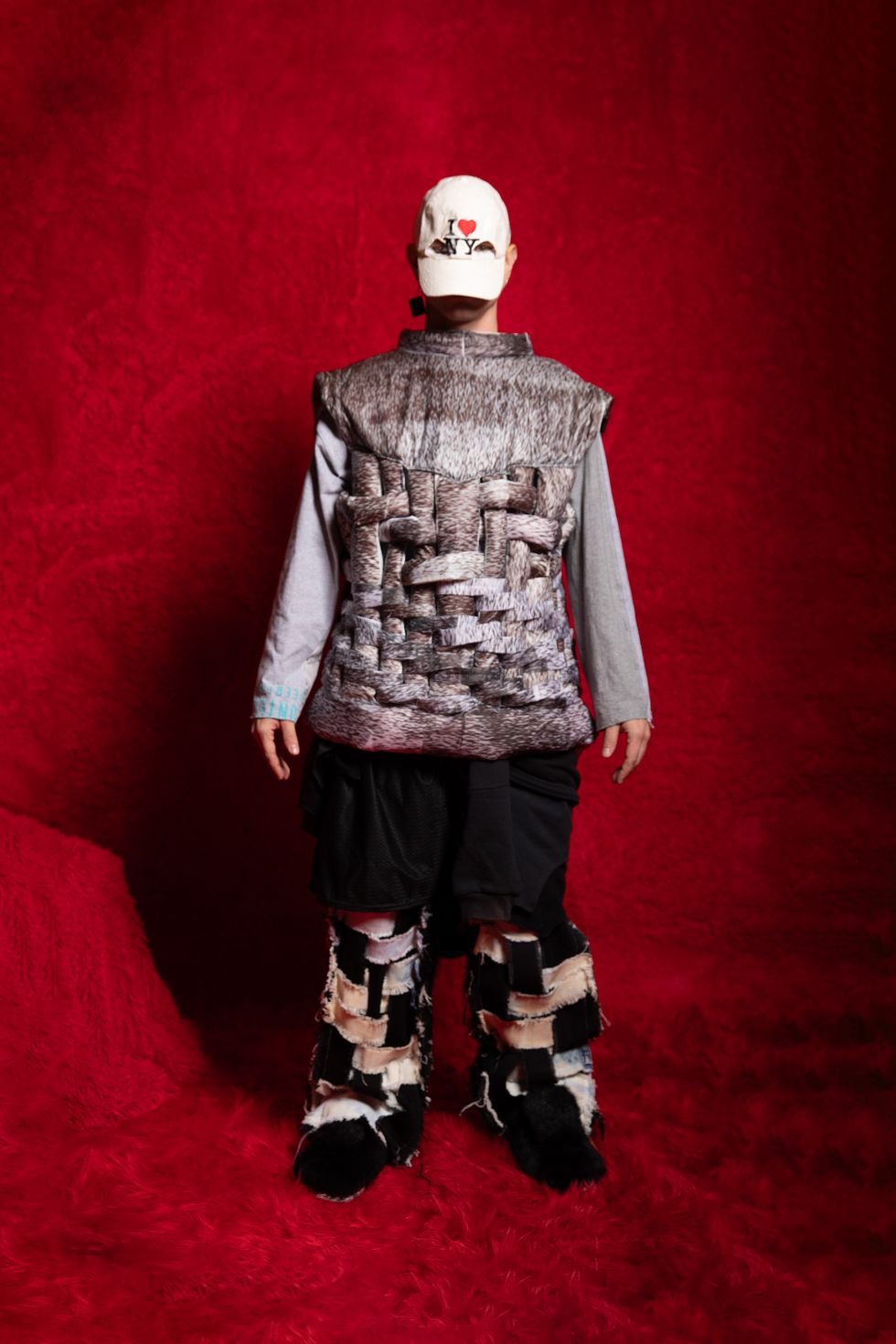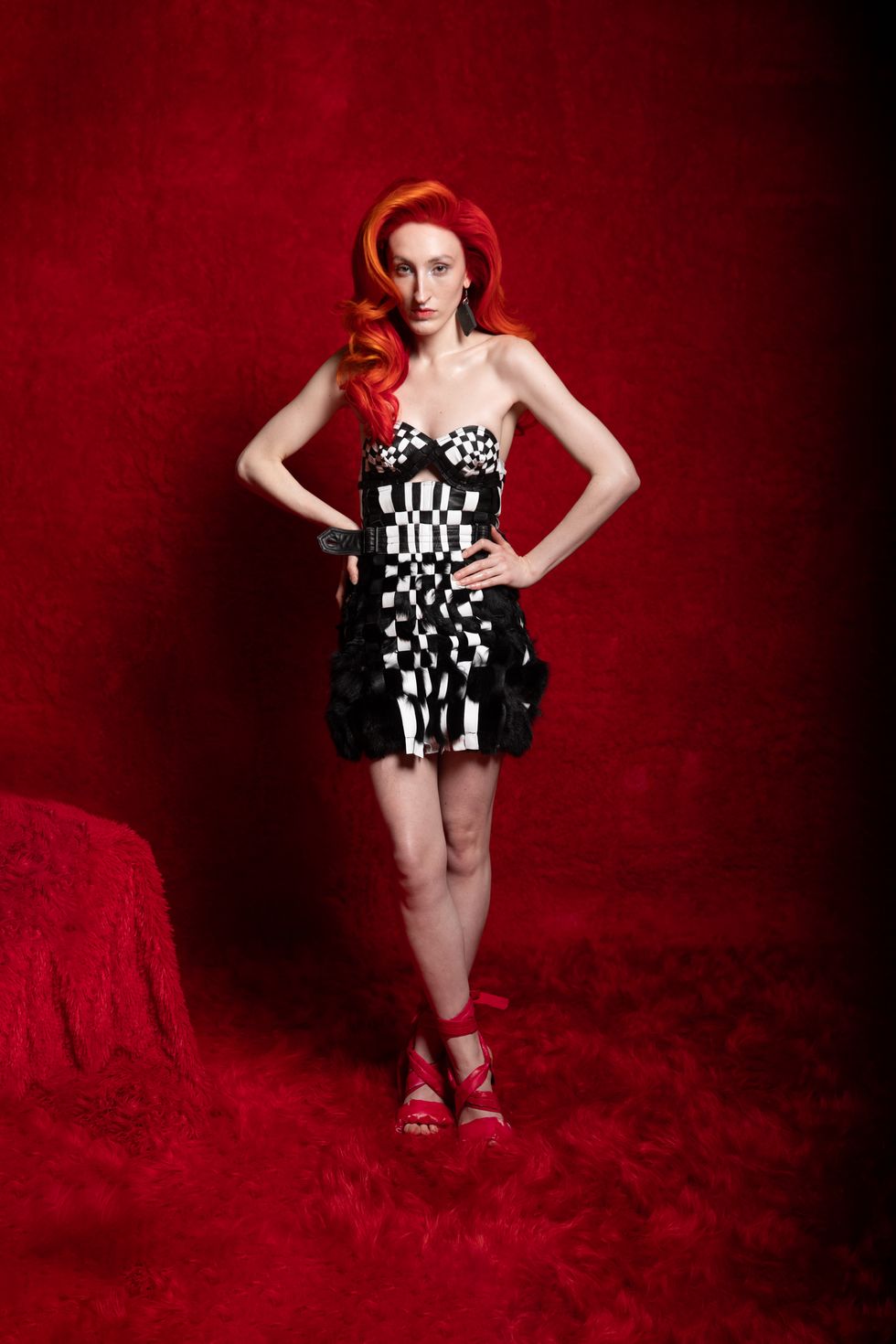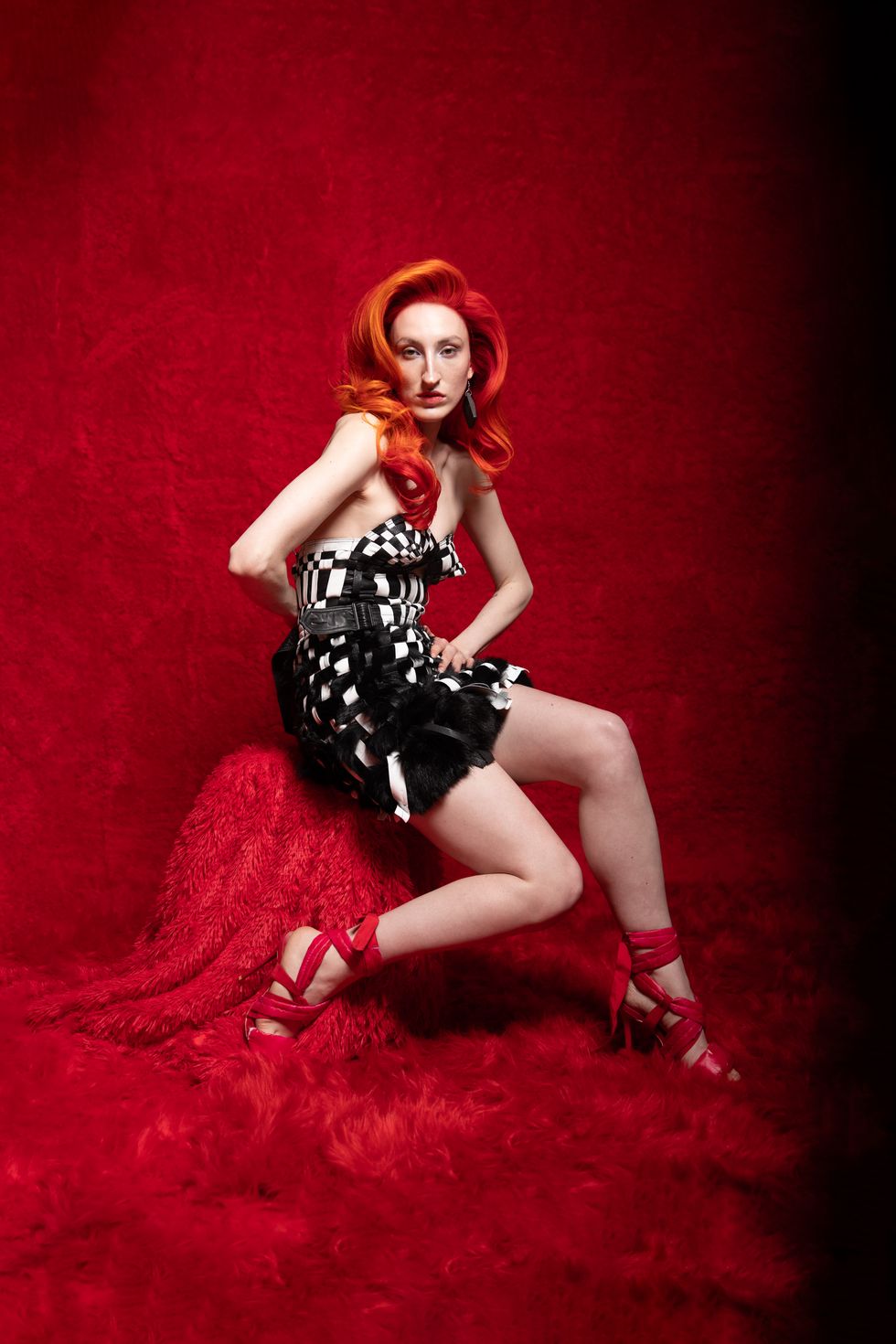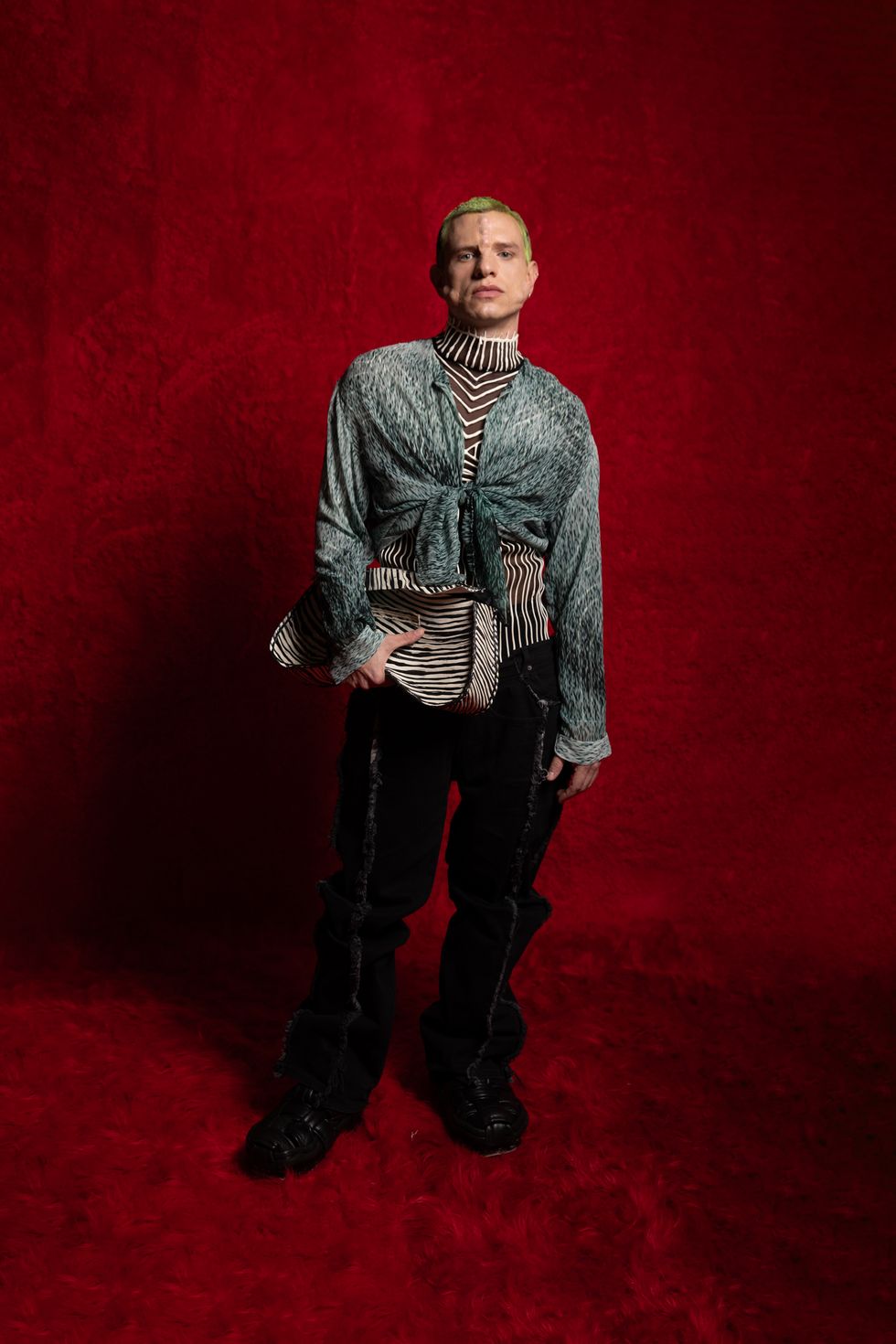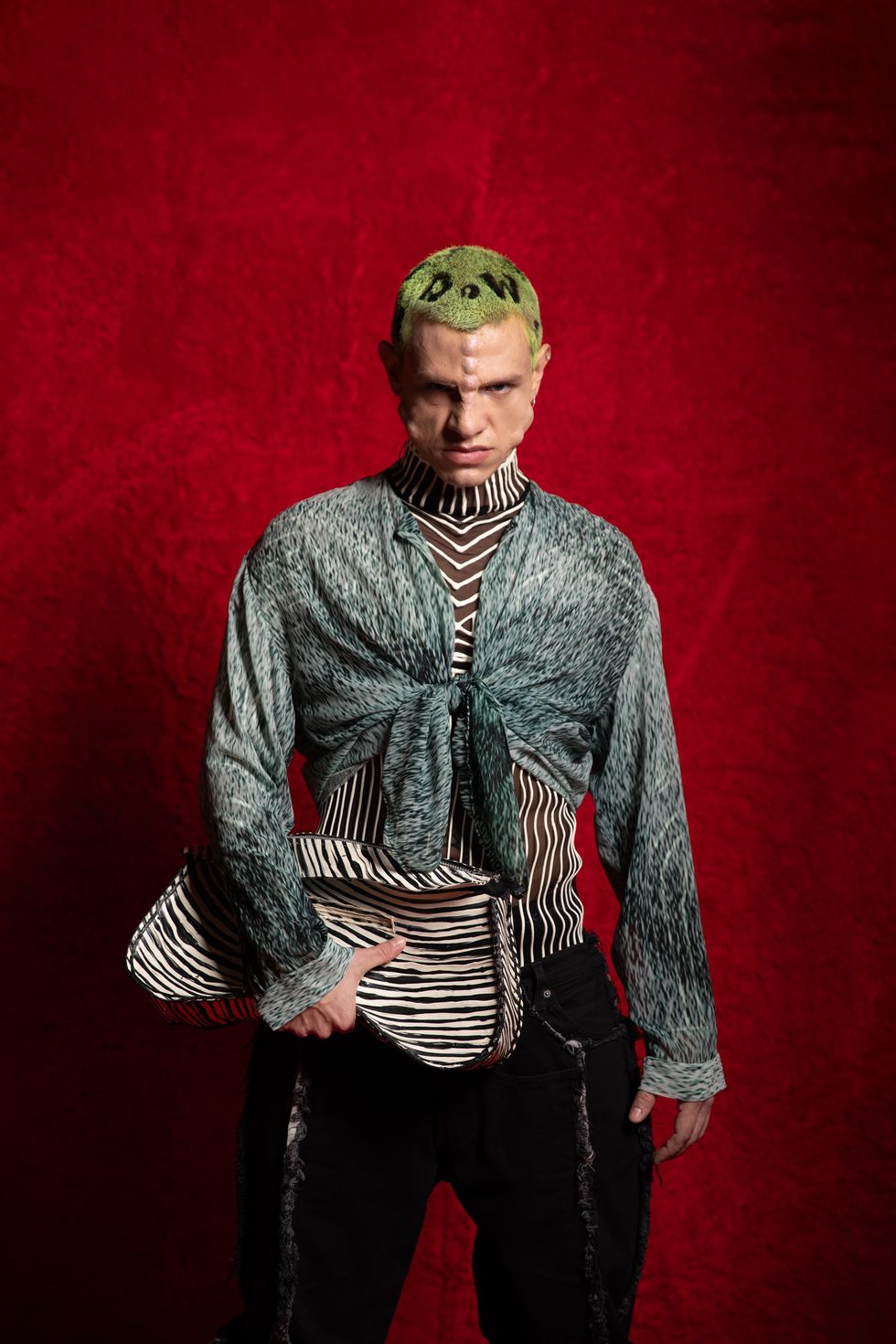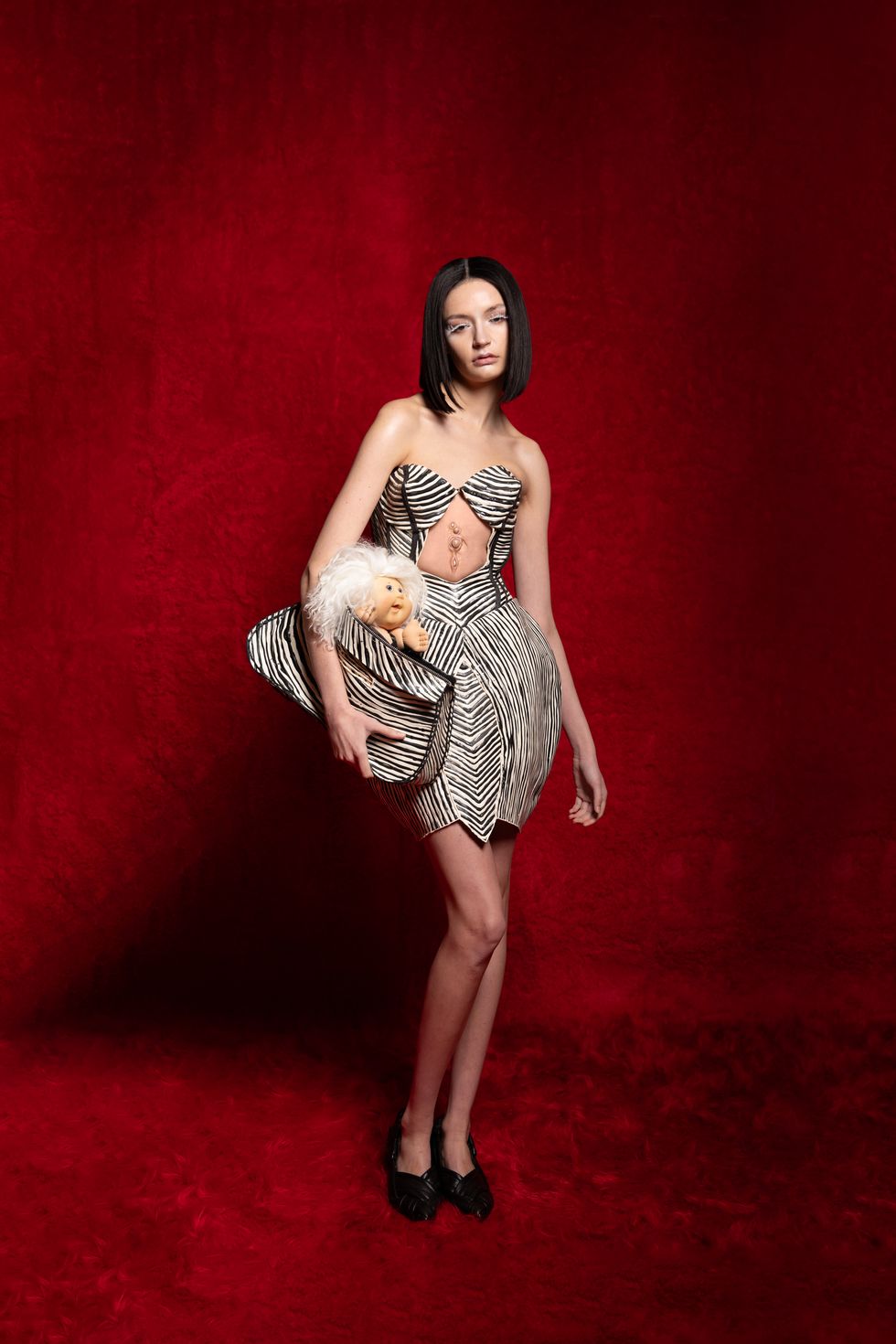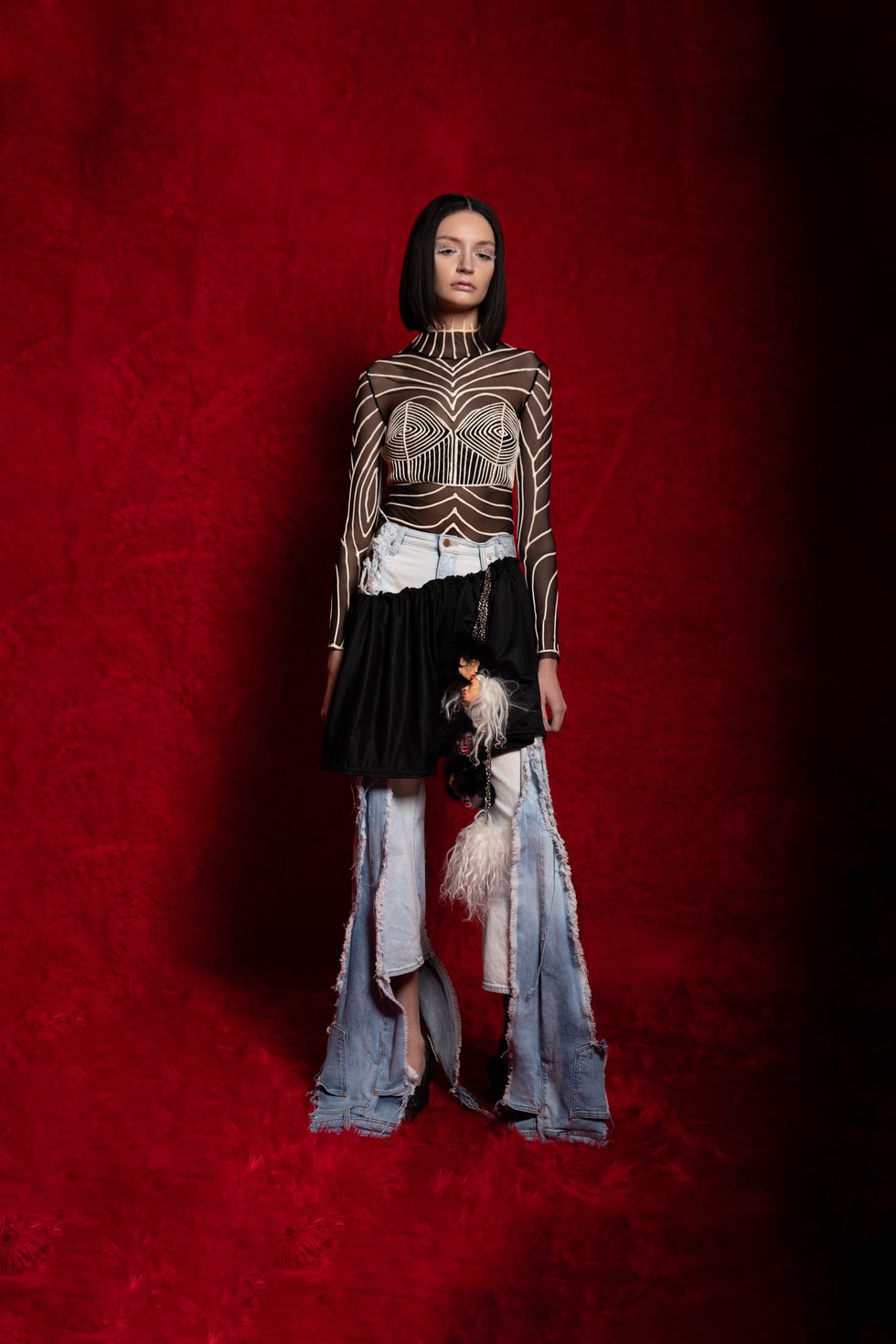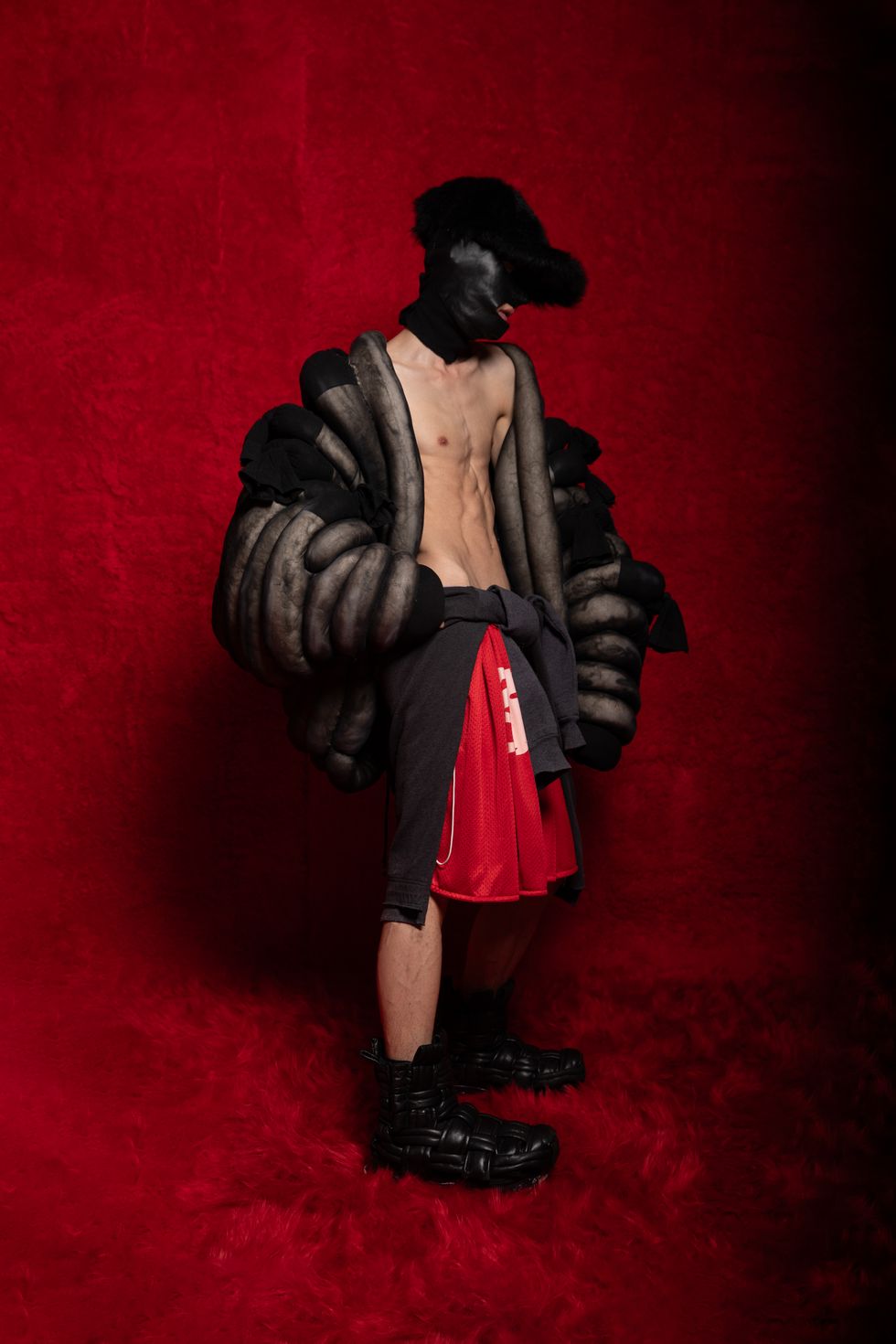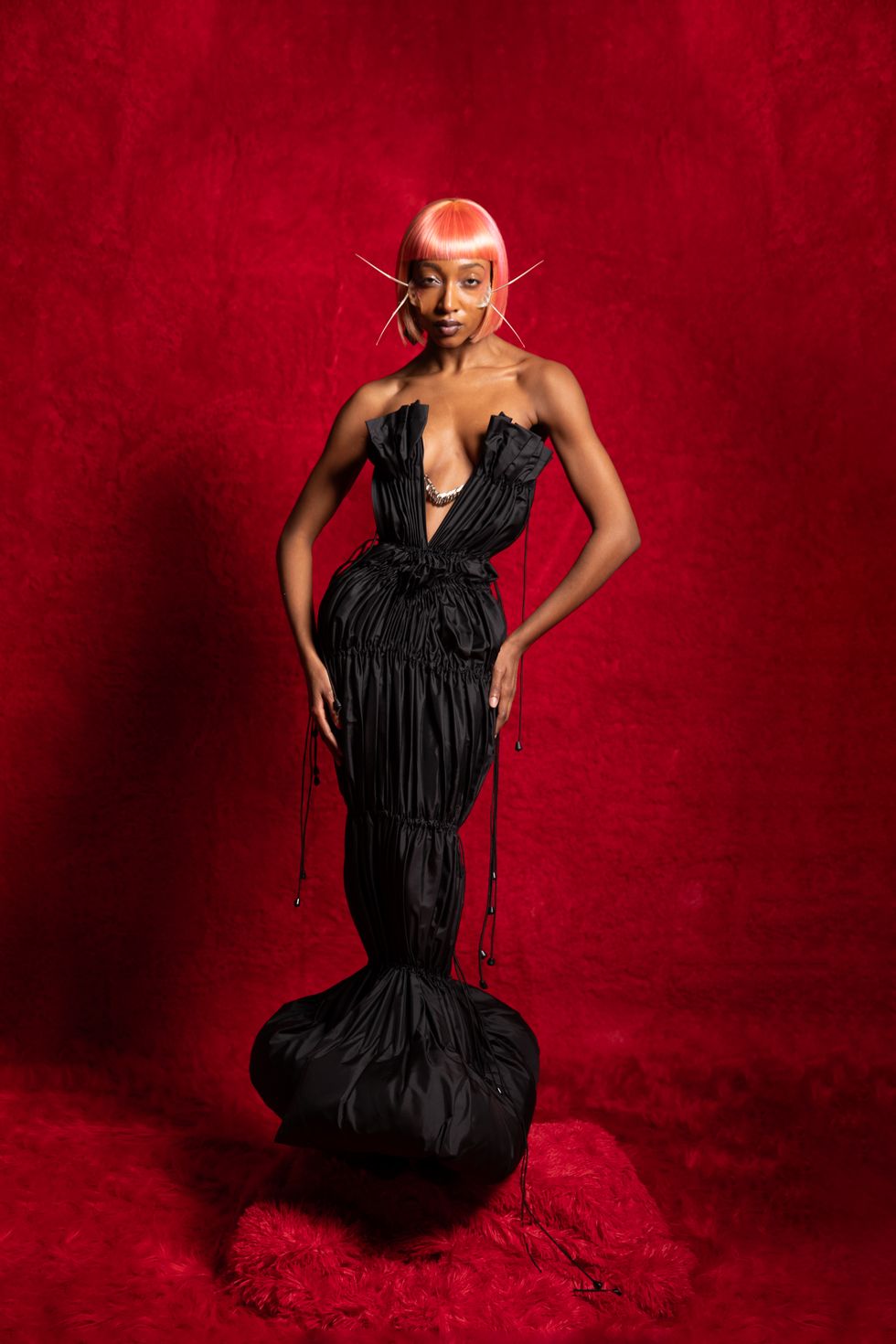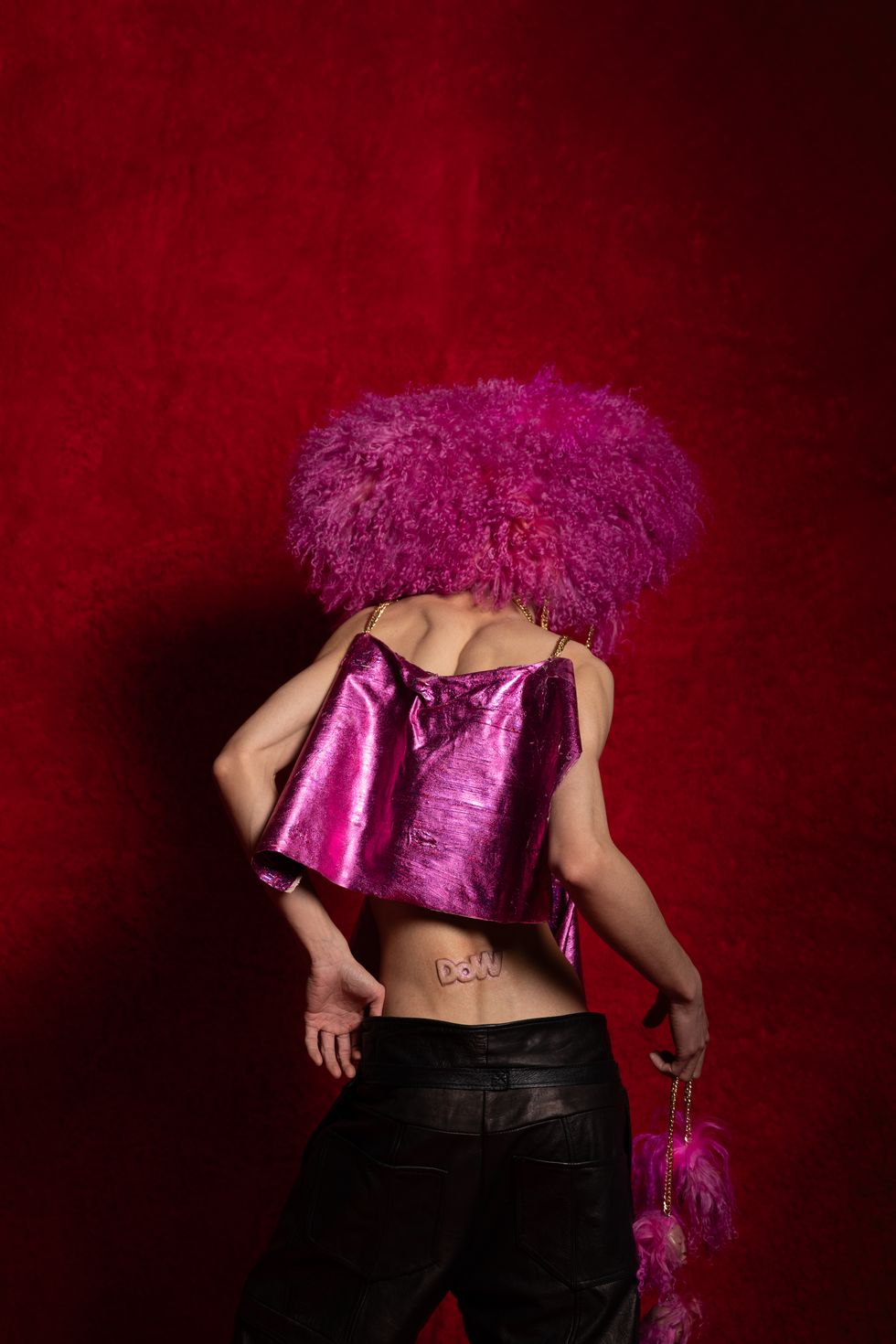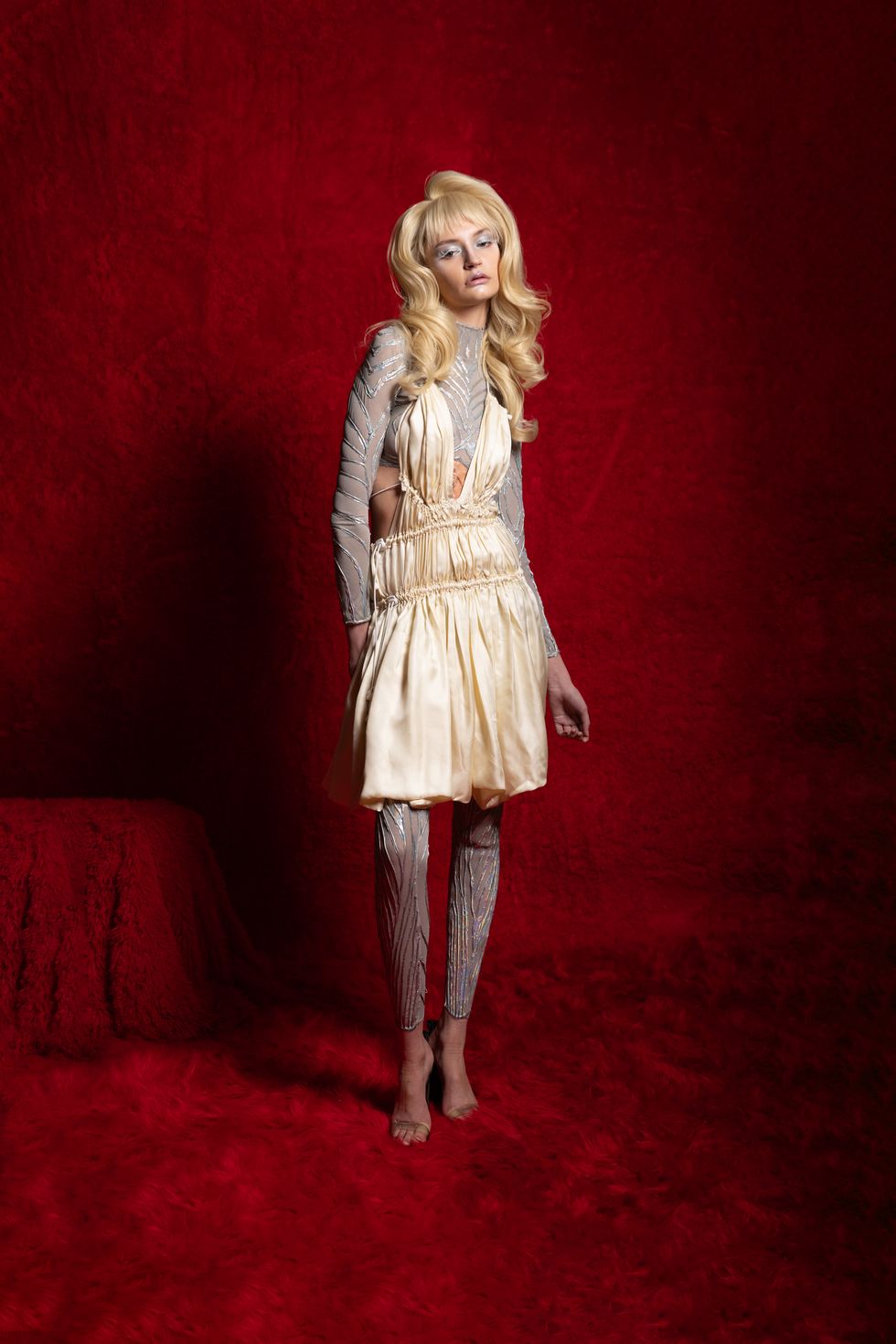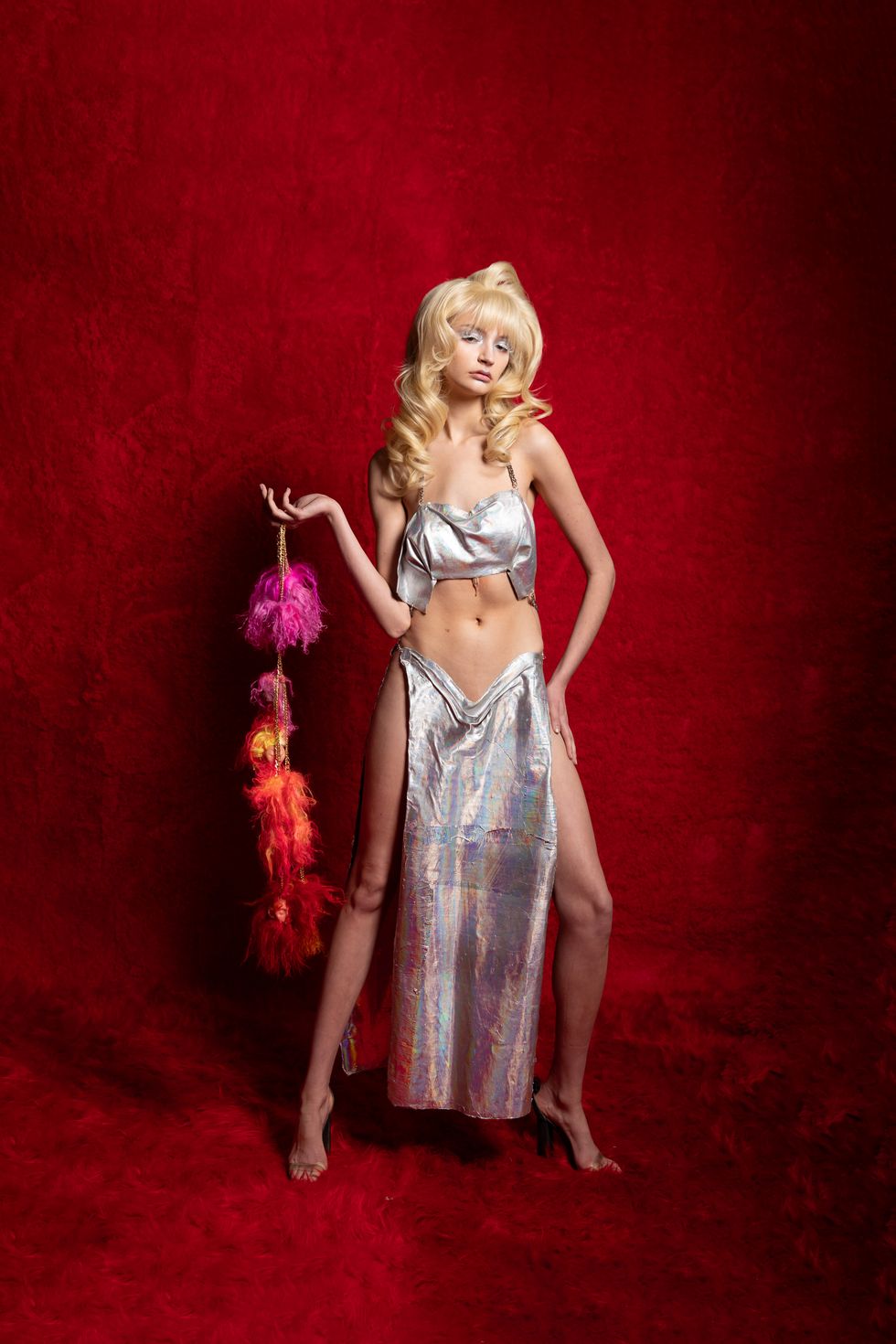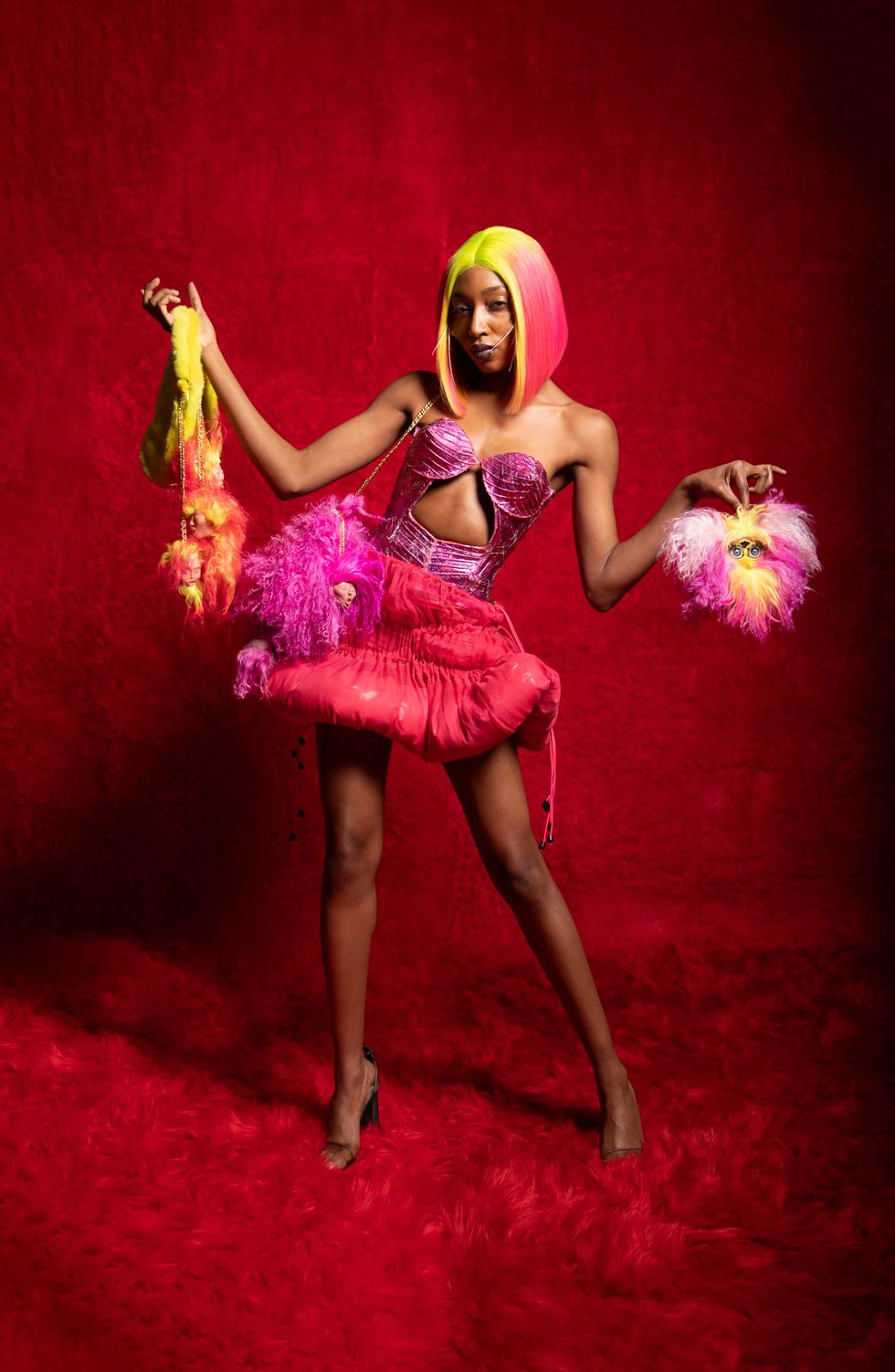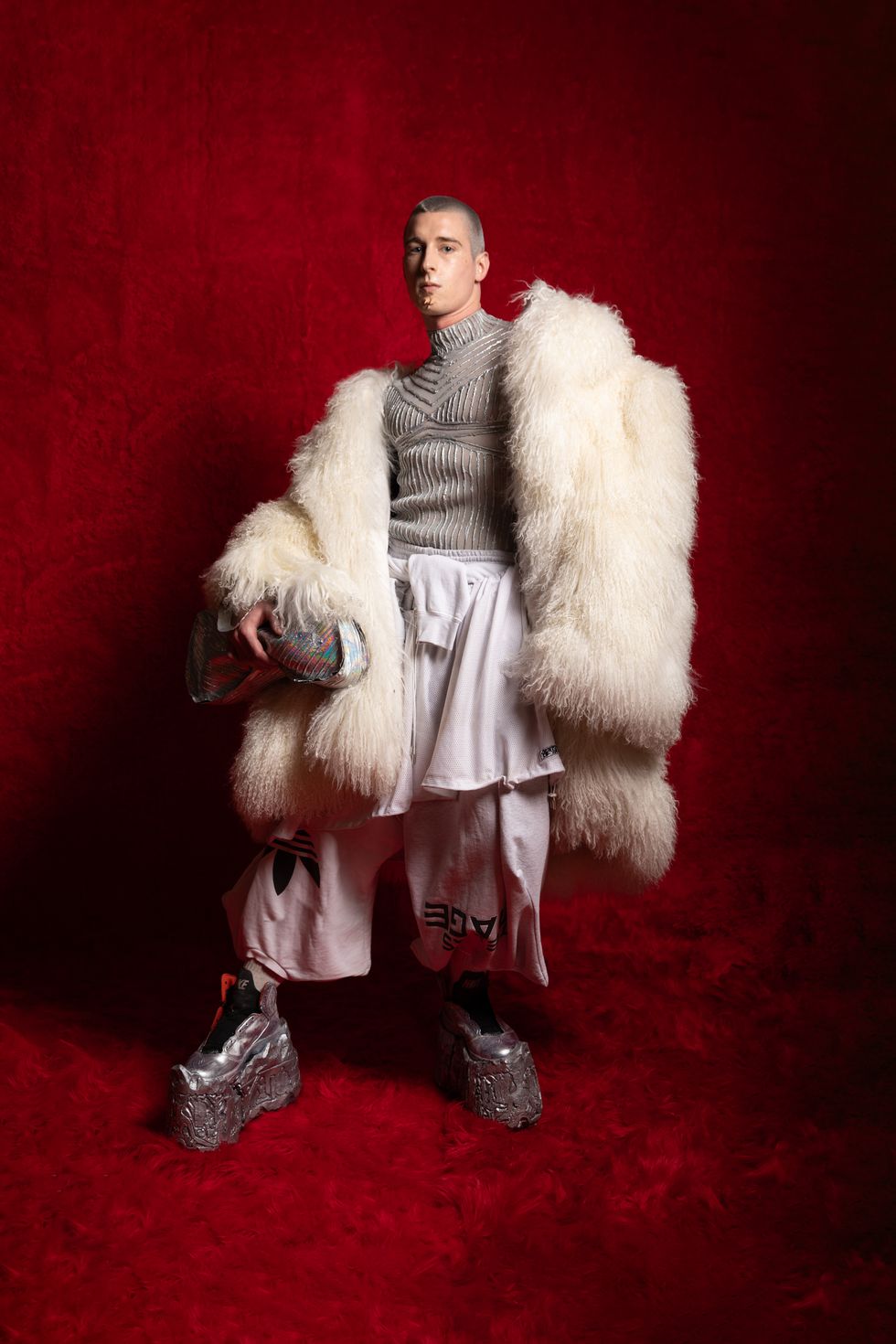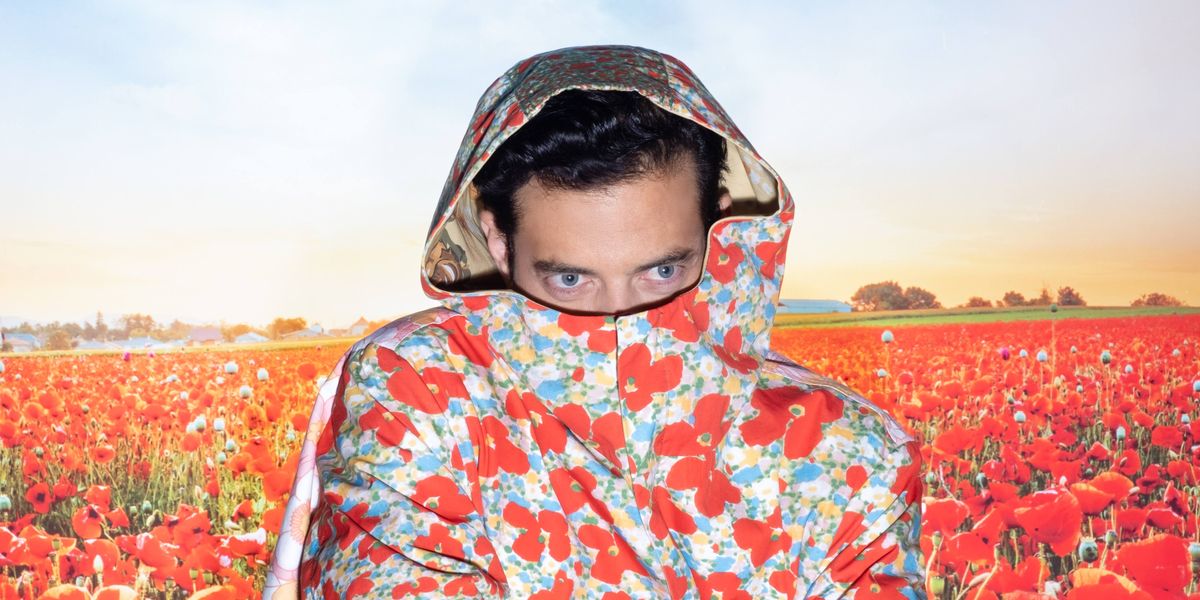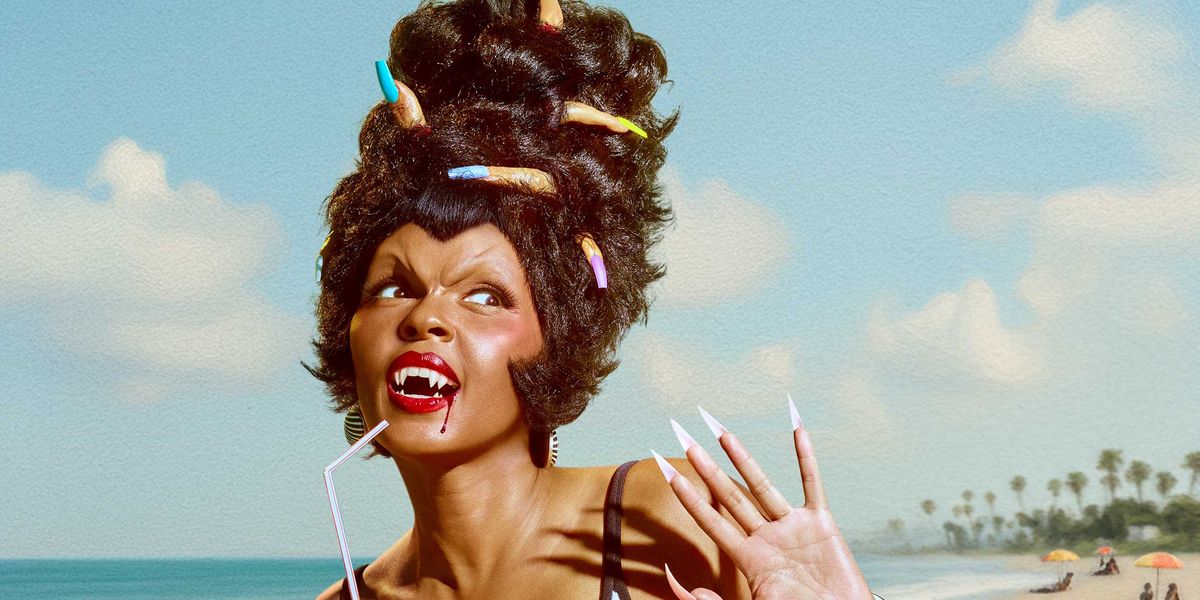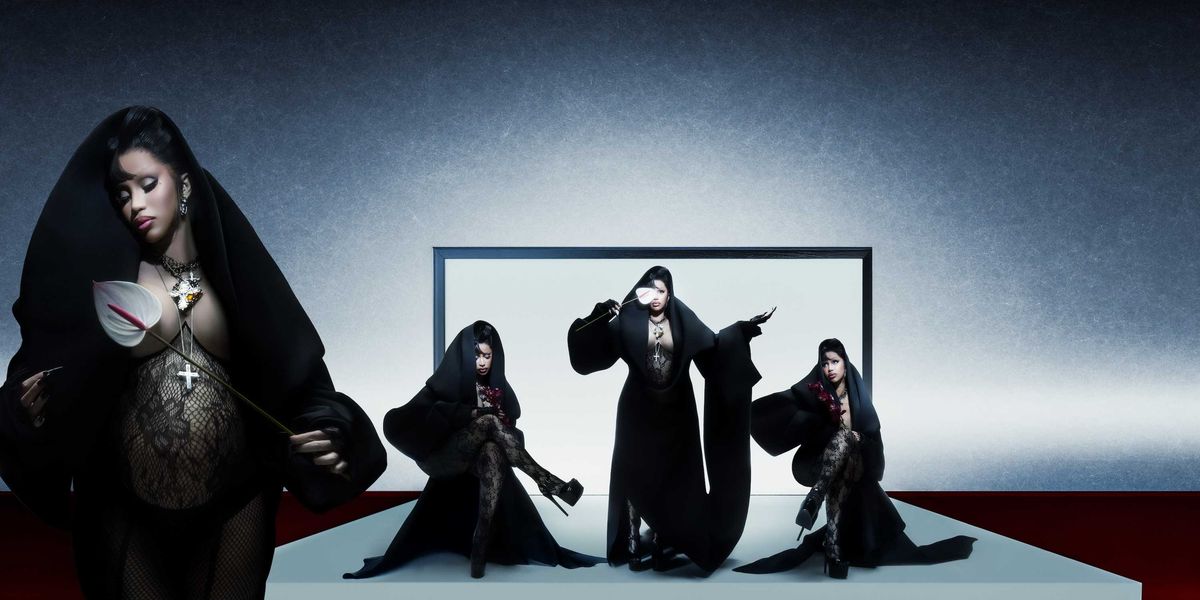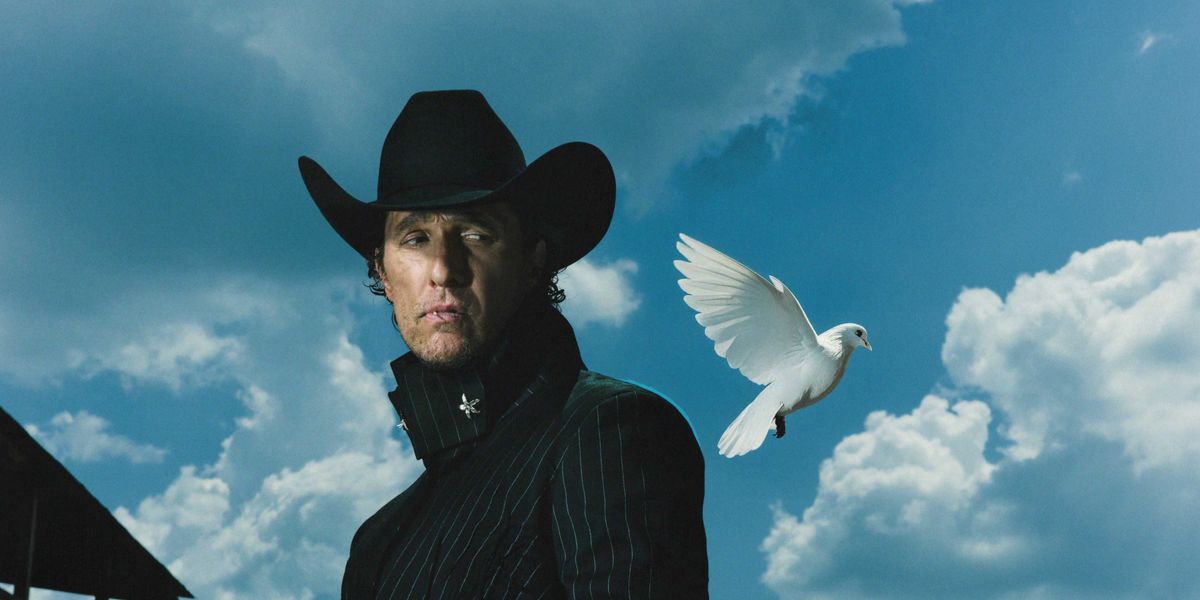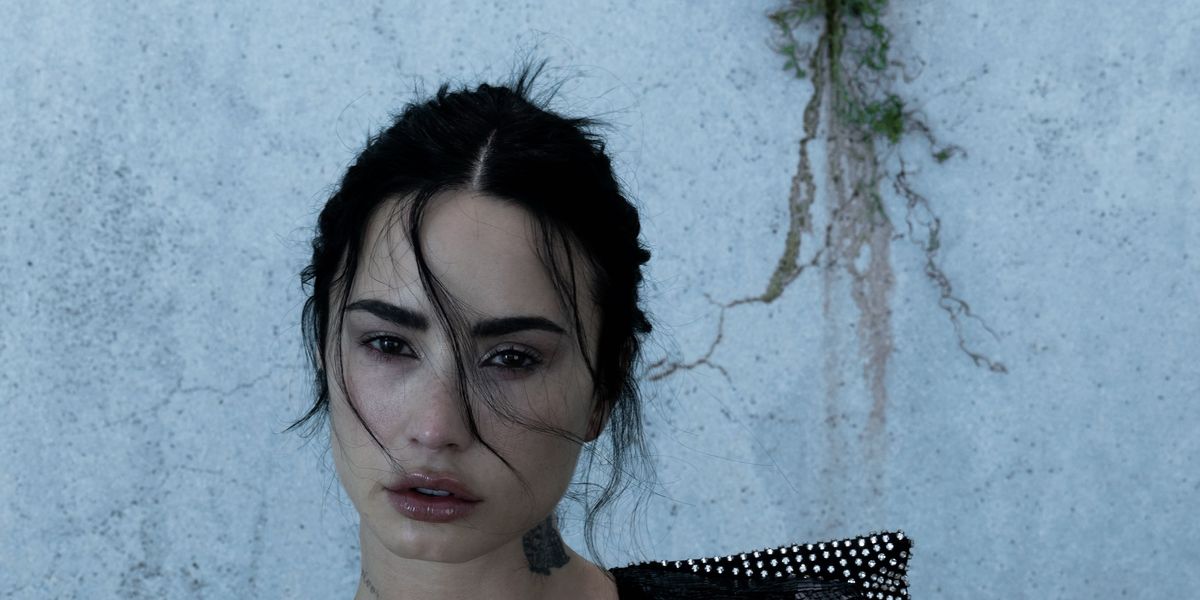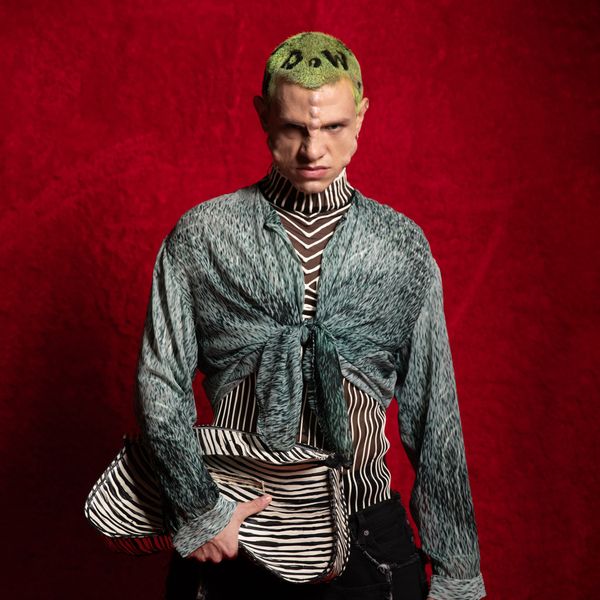
Destroyer of Worlds Flourishes in the Apocalypse
May 20, 2025
This February at New York Fashion Week, Destroyer of Worlds introduced "The Dark Forest" — the brand's Fall 2025 collection that showed a glimpse into designer Cole Durkee's beautifully chaotic mind that wondered what it might look like if consumer and pop culture ends up being the ultimate salvation at the end of the world.
Now, the brand is releasing the lookbook for the 25-look collection, giving a closer look at what the brand is all about: regenerating existing materials — like secondhand leather, fur, denim and cotton jersey — into new styles with dyes, print and latex.
"I’m interested in transformation, how your clothes can change you," Durkee tells PAPER. "They can show who you are or who you want people to think you are. Old things become new things, destruction as creation. Operating on an unlimited growth mindset is over."
Below, PAPER chatted with Durkee about fame in a crumbling world, thriving despite it all and destroying things to make them
What was the inspiration behind your latest collection?
"The Dark Forest" is named after a book in a series about first contact with aliens and the peril that ensues called the Remembrance of Earth’s Past trilogy. In this series there is a group of people that attempt to conspire with the aliens to destroy humanity. I thought it would be fun to imagine if those people were the rich, famous and powerful. I was thinking a lot about Futurama, live celebrity heads in jars and the persistence of fame. I was also inspired by Idiocracy and the oversaturation of branding and branding becoming aesthetics — so pervasive that we form sentimental relationships with them. I think it’s funny that we are inspired by dystopias and media about dystopia, sometimes I wonder if it is self perpetuating?
How does this collection reflect the ethos of your brand?
This collection is about feeling famous, glorious and strong despite being surrounded by a crumbling world. That sentiment is the spark for this brand. Destroyer of Worlds is tough and gritty, but ostentatious and eccentric at the same time. You can still flourish in the face of the apocalypse.
Can you walk us through the creative process for this collection?
I usually get inspired by something I’m reading or watching, usually science fiction or horror, and I have an idea that is an extrapolation from the original media. I thought an alien invasion where celebrities are the focus would be a good mix, a fun time even. In many instances I was trying to create things that were being described in the books, but not pictured. Future clothes described in Death’s End as being able to automatically shape to the wearer was something that had a practical solution with corded channels that wrap the garments. Dystopic books and movies like Snowcrash, the Dark Forest and Idiocracy made me think about how the future might look a lot like the past at some points, which brought me to deconstruction and how that should and will become a stylistic necessity in the future. Clothes will have to be made of other clothes. And if it’s about aliens, then we have to make some alien skin, that's where the latex comes in.
These elements all synthesized nicely to tell this story about fame and how the most relevant get to dictate the narrative. Consumer culture is all encompassing, and the future may not be as advanced as we think it will be.
What was the concept behind your latest runway and look book? What was the narrative you were trying to tell?
The look book is a liminal red carpet space, like an introduction to my ancient alien celebs. It’s a welcomed invasion of our fabulous new oppressors. The runway show is the extension of this invasion story. The invaders are invited to address their subjects on live television, their terror white washed by the fawning media. It’s a story about how the end of the world will be welcomed and spun to seem like a good thing and it will be on TV! Probably not based on anything real.
Did you have any formal training in fashion design, or are you self-taught? How did that journey unfold?
I went to undergrad at SAIC and the curriculum is very loose. You don’t have to declare a major, so I began my studies in sculpture and drawing. I started taking sewing classes in the fashion department, taxidermy classes outside of school, which fed into my fur and leather classes in school. All of these skills inform what I’m doing now, but back then, I felt like I lacked structure.
After I graduated I made looks for drag queens in Chicago for a year. I was lucky enough to meet, start dressing and hang out with Shea Coulée the summer before she was cast on Drag Race. I got to have really fierce club kid night life moments and serve wacky looks, which definitely shaped what I do now.
I still felt like I had a lot of tools but lacked direction. I applied to the Graduate Diploma at CSM, and when I got in, I was roasted (lovingly) by David Kappo for a year, which was needed. From the Graduate Diploma, I went to Parsons MFA Design & Society with Shelley Fox and JOFF, and that’s where I really brought it all together. I knew what I wanted to say and how I wanted to say it from those experiences.
Who were some of your early fashion icons or designers that influenced you?
The biggest credit is probably this one Fashion Channel YouTube video. It was the Dolce & Gabbana Spring 2007 show with Scissor Sisters' I Don’t Feel Like Dancin’ to open the show. I remember finding that video on my iPod Touch, and after that, I kept watching more and more and more and more.
Lady Gaga was the reason I started looking up designers’ names when she would wear a look. She was pulling archive looks way before it became popular (and overdone at this point). From her I found McQueen, Mugler, Chalayan, Gareth Pugh and really opened my eyes to fashion’s extremes.
I was obsessed with reality TV in junior high and high school. When I found an America’s Next Top Model marathon playing on Oxygen, it was over. I wanted to be a part of whatever that was. The fantasy, drama and craziness were the epitome of fashion when I was a kid.
How does this collection fit into the larger trajectory of your brand’s evolution?
This collection showcases techniques and silhouettes that I feel like are mainstays that can grow and mutate for a long time. The wovens, the latex, the bungee garments, the reclaimed furs dyed by Nathan Juergensen, the prints I do with Dan Polyak, the giant block platforms I made with Vasaris Balzekas and the deconstruction are all just getting started, and this collection was a broad sampling of that offering. I can already see where the work continues to develop for collections to come.
Conceptually, this is the heart of what I’m interested in: pop culture, consumer culture and the future! Pop culture and consumer culture surround me, so they always come back into my work. I'm a filter of all of the things I experience, even if those experiences are manufactured. I love movies and TV, celebrities and little collectable consumer goods, and those things will continue to manifest in the work.
What’s next for you after this collection?
Right now, I’m trying to say yes to more! I’m focused on growing and making more. I’m hoping this collection continues to connect me to more people and collaborators. The exposure has been major so far, and I just want to keep building momentum!
Photography: Marco Ovando
Hair: Nathan Juergensen
Makeup: Nina Carelli
Makeup assistant: Haydyn Lazarus
Models: Liam, Karyl, Riley, Kaleb, Bo, Julia
Retoucher: Dan Polyak
PR: And Such NYC
Production: Monbon
Production Company: Ojeras
Assistant Producer: Bradley Duley
Set Designer: Katie Bloom
Talent Coordinator: Tamara Tarwoe
Furs dyed by Nathan Juergensen
Prints in collaboration with Dan Polyak
Platforms in collaboration with Vasaris Balzekas
From Your Site Articles
MORE ON PAPER
Entertainment
Rami Malek Is Certifiably Unserious
Story by Joan Summers / Photography by Adam Powell
Story by Joan Summers / Photography by Adam Powell
14 November
Music
Janelle Monáe, HalloQueen
Story by Ivan Guzman / Photography by Pol Kurucz/ Styling by Alexandra Mandelkorn/ Hair by Nikki Nelms/ Makeup by Sasha Glasser/ Nails by Juan Alvear/ Set design by Krystall Schott
Story by Ivan Guzman / Photography by Pol Kurucz/ Styling by Alexandra Mandelkorn/ Hair by Nikki Nelms/ Makeup by Sasha Glasser/ Nails by Juan Alvear/ Set design by Krystall Schott
27 October
Music
You Don’t Move Cardi B
Story by Erica Campbell / Photography by Jora Frantzis / Styling by Kollin Carter/ Hair by Tokyo Stylez/ Makeup by Erika LaPearl/ Nails by Coca Nguyen/ Set design by Allegra Peyton
Story by Erica Campbell / Photography by Jora Frantzis / Styling by Kollin Carter/ Hair by Tokyo Stylez/ Makeup by Erika LaPearl/ Nails by Coca Nguyen/ Set design by Allegra Peyton
14 October
Entertainment
Matthew McConaughey Found His Rhythm
Story by Joan Summers / Photography by Greg Swales / Styling by Angelina Cantu / Grooming by Kara Yoshimoto Bua
Story by Joan Summers / Photography by Greg Swales / Styling by Angelina Cantu / Grooming by Kara Yoshimoto Bua
30 September
Music
Demi Lovato Is No Joke
Story by Ivan Guzman / Photography by Jason Renaud / Styling by Chris Horan/ Makeup by Loftjet / Set design by Allegra Peyton
Story by Ivan Guzman / Photography by Jason Renaud / Styling by Chris Horan/ Makeup by Loftjet / Set design by Allegra Peyton
15 September

